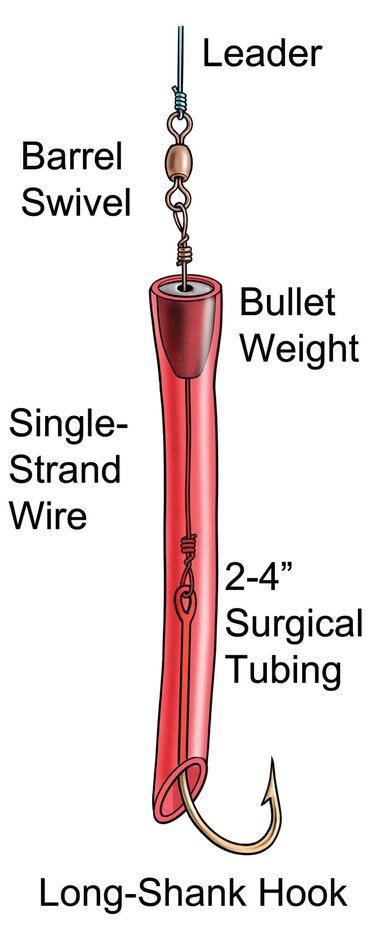How to Catch Dolphin
South Carolina Fishing
Mar 28, 2024 14:32:21 #
Sent to me by Captain Chip Berry. Hope you enjoy.
How to Catch Dolphin
Baiting techniques that make the most of school dolphin.
By George Poveromo
Updated: March 20, 2020
Large dolphin being pulled on board
The biggest dolphin often are found alone or in pairs when they’re traveling or migrating in open water. Scott Salyers
Catching school dolphin can be a fast and furious undertaking; lines cross, schoolies come flipping into the boat, free hands scramble to cut chum and bait, and anglers hooked to a decent fish bark orders for a gaff or landing net. Everyone gets caught up in the moment.
Usually eager players, schoolies are sometimes reluctant to hang around, particularly if they’ve been recently hammered. However, regardless of whether they’re in gorging or traveling mode, there are strategies to keep them around longer. Below are some of my time-proven tricks to keep school dolphin interested.
Dolphin blitzes are frustrating for the unprepared. If only a couple of outfits are rigged for the task, time spent rerigging from a break-off or swallowed hook is often long enough for the school to move on. School dolphin can evaporate that quickly.
Several rods should be rigged and reserved strictly for school fish. Aboard my boat, there is a minimum of eight outfits, mostly 8- and 12-pound-class spinners. In addition, a pair of 20-pound spinners stand ready for larger, solitary fish. Should a leader need to be replaced, that outfit is racked, and a fresh one is pressed into action without delay. Also, such an inventory lends the option of “loading up” the rods. More on this trick in a bit.
School dolphin are fooled easily at the onset. However, they’ll surely smarten after repeatedly seeing the same bait. My decadeslong approach is to first use artificials, followed by cut natural bait, and then live bait. But there’s a bit of a twist to this as well.
With artificials, start off using the same style and color on all the rods. Pitch an arrow- or lima-bean-style bucktail in white or yellow. Bucktails cast and sink well, reaching fish at varying distances and depths. What’s more, their sizes parallel those of the forage thriving under weed lines and flotsam. Yellow is a hot dolphin color because it mimics the coloration of pufferfish, a common dolphin delicacy.
Timing is key. Once a school begins losing interest in yellow jigs, switch to white. This swap coaxes them back into feeding. Ditto when switching from a straight-tracking bucktail (arrowhead) to one that wobbles (compressed head). Bucktails aren’t without disadvantages. They often lose their dressing after catching several fish.
Poveromo Peanut lure
When dolphin are hitting artificials, the Poveromo Peanut, a diminutive variation on the classic tube lure, does the job. With single-strand-wire rigging, it remains nearly indestructible fish after fish. Steve Sanford
Years ago, to counter the mentioned deficiency, I fabricated makeshift artificials, using 2- to 4-inch sections of surgical tubing in yellow, chartreuse, orange and blood red, a bullet weight (freshwater worm sinker) forced into one end of the tube, single-strand wire, a long shank, 4/0 or 5/0 hook (with the shank hidden inside the tube), and a small barrel swivel affixed at opposite ends of the wire. I jokingly dubbed the creation the “Poveromo Peanut.” The lures can be skipped on the surface, slowly worked beneath it, or allowed to sink. The best part is dolphin can’t destroy them. They’ll repeatedly catch fish with only scuff marks to show for it.
Meat Them
Once a school wises to artificials, switch to chunks of ballyhoo, squid or Spanish sardines. Simply cast or free-line a bait until it’s picked up, which should be instantaneous. To reignite the bite, broadcast a few freebies. However, don’t overdo it and fill the fish. Simply pitch two or three chunks with each loaded bait presentation.
Dolphin chasing bait
Dolphin find squid, whole or cut, nearly irresistible. Kevin Dodge
I prefer around 15 feet of 30-pound leader for bailing fish. When it’s time to rerig after a blitz, leaders can be cut back as needed, without having to tie on a new one (typical of short leaders). If you don’t have backup outfits, keep a box of hooks handy for quick cut-and-ties after each fish. The longer you stay on a school of fish, the shorter the leader will get. But it will remain long enough until the bailing is done.
Live-Bait Liberation
When the remaining schoolies shy away from cut bait, pitch out the liveys. The live bait will re-energize the school. We reserve our live baits mostly for running-and-gunning and pitching to larger dolphin. However, we’ll certainly use some for reluctant schoolies, and any larger fish in the mix that won’t fall for our other tricks.
A classic dolphin tactic is to take along a few dozen live shrimp. Similar to the routine outlined above, pitch out a live shrimp when dolphin tire of everything else. Live shrimp will fool the most leery of them.
Based on the shrimp size, rig an 8-pound spinner with a 2/0 to 3/0 J-style hook and 20- to 25-pound leader for casting distance, a stealthy rig that won’t overburden the live shrimp. In addition, tipping a bucktail with a live shrimp provides scent and offers a good way to deliver a shrimp deep.
The Dolphin Whisperer
To bring a dolphin school back around, or to draw one out from underneath a weed line, a topwater plug is magical. My go-to plug is a Williamson Popper Pro 130 fished on a 20-pound-class spinner with a 50-pound fluorocarbon leader. It chugs and splashes, is relatively small and streamlined, so it casts well, and comes with two extra-strong single hooks.
Gaffing a large dolphin
Oversized dolphin require skill to safely bring aboard. Gary Caputi
We’ve rallied back schools of dolphin as well as uncovered new ones many times with this plug. It goes out during our stops alongside weed lines and patches, helping us determine if they’re worthy of greater fishing effort. If a larger dolphin doesn’t clobber the plug, an entire school will chase it back to the boat, at which point the school fish outfits come into play. My favorite plug colors are mahi (dolphin eat their young), blue silver (flying fish, a natural forage) and gold black (bar jacks and banded rudderfish).
The Rotation
The old trick of keeping one dolphin in the water to hold a school’s interest doesn’t quite cut it anymore. Nowadays it takes several hooked ones by the boat. The three or four hooked fish will be digging deep and occasionally leaping about. The ensuing commotion and illusion of a feeding blitz will keep the school near the boat and their aggressiveness stoked. This is where all those backup rods come in handy. It’s a way to guarantee several dolphin dinners in short order.
How to Catch Dolphin
Baiting techniques that make the most of school dolphin.
By George Poveromo
Updated: March 20, 2020
Large dolphin being pulled on board
The biggest dolphin often are found alone or in pairs when they’re traveling or migrating in open water. Scott Salyers
Catching school dolphin can be a fast and furious undertaking; lines cross, schoolies come flipping into the boat, free hands scramble to cut chum and bait, and anglers hooked to a decent fish bark orders for a gaff or landing net. Everyone gets caught up in the moment.
Usually eager players, schoolies are sometimes reluctant to hang around, particularly if they’ve been recently hammered. However, regardless of whether they’re in gorging or traveling mode, there are strategies to keep them around longer. Below are some of my time-proven tricks to keep school dolphin interested.
Dolphin blitzes are frustrating for the unprepared. If only a couple of outfits are rigged for the task, time spent rerigging from a break-off or swallowed hook is often long enough for the school to move on. School dolphin can evaporate that quickly.
Several rods should be rigged and reserved strictly for school fish. Aboard my boat, there is a minimum of eight outfits, mostly 8- and 12-pound-class spinners. In addition, a pair of 20-pound spinners stand ready for larger, solitary fish. Should a leader need to be replaced, that outfit is racked, and a fresh one is pressed into action without delay. Also, such an inventory lends the option of “loading up” the rods. More on this trick in a bit.
School dolphin are fooled easily at the onset. However, they’ll surely smarten after repeatedly seeing the same bait. My decadeslong approach is to first use artificials, followed by cut natural bait, and then live bait. But there’s a bit of a twist to this as well.
With artificials, start off using the same style and color on all the rods. Pitch an arrow- or lima-bean-style bucktail in white or yellow. Bucktails cast and sink well, reaching fish at varying distances and depths. What’s more, their sizes parallel those of the forage thriving under weed lines and flotsam. Yellow is a hot dolphin color because it mimics the coloration of pufferfish, a common dolphin delicacy.
Timing is key. Once a school begins losing interest in yellow jigs, switch to white. This swap coaxes them back into feeding. Ditto when switching from a straight-tracking bucktail (arrowhead) to one that wobbles (compressed head). Bucktails aren’t without disadvantages. They often lose their dressing after catching several fish.
Poveromo Peanut lure
When dolphin are hitting artificials, the Poveromo Peanut, a diminutive variation on the classic tube lure, does the job. With single-strand-wire rigging, it remains nearly indestructible fish after fish. Steve Sanford
Years ago, to counter the mentioned deficiency, I fabricated makeshift artificials, using 2- to 4-inch sections of surgical tubing in yellow, chartreuse, orange and blood red, a bullet weight (freshwater worm sinker) forced into one end of the tube, single-strand wire, a long shank, 4/0 or 5/0 hook (with the shank hidden inside the tube), and a small barrel swivel affixed at opposite ends of the wire. I jokingly dubbed the creation the “Poveromo Peanut.” The lures can be skipped on the surface, slowly worked beneath it, or allowed to sink. The best part is dolphin can’t destroy them. They’ll repeatedly catch fish with only scuff marks to show for it.
Meat Them
Once a school wises to artificials, switch to chunks of ballyhoo, squid or Spanish sardines. Simply cast or free-line a bait until it’s picked up, which should be instantaneous. To reignite the bite, broadcast a few freebies. However, don’t overdo it and fill the fish. Simply pitch two or three chunks with each loaded bait presentation.
Dolphin chasing bait
Dolphin find squid, whole or cut, nearly irresistible. Kevin Dodge
I prefer around 15 feet of 30-pound leader for bailing fish. When it’s time to rerig after a blitz, leaders can be cut back as needed, without having to tie on a new one (typical of short leaders). If you don’t have backup outfits, keep a box of hooks handy for quick cut-and-ties after each fish. The longer you stay on a school of fish, the shorter the leader will get. But it will remain long enough until the bailing is done.
Live-Bait Liberation
When the remaining schoolies shy away from cut bait, pitch out the liveys. The live bait will re-energize the school. We reserve our live baits mostly for running-and-gunning and pitching to larger dolphin. However, we’ll certainly use some for reluctant schoolies, and any larger fish in the mix that won’t fall for our other tricks.
A classic dolphin tactic is to take along a few dozen live shrimp. Similar to the routine outlined above, pitch out a live shrimp when dolphin tire of everything else. Live shrimp will fool the most leery of them.
Based on the shrimp size, rig an 8-pound spinner with a 2/0 to 3/0 J-style hook and 20- to 25-pound leader for casting distance, a stealthy rig that won’t overburden the live shrimp. In addition, tipping a bucktail with a live shrimp provides scent and offers a good way to deliver a shrimp deep.
The Dolphin Whisperer
To bring a dolphin school back around, or to draw one out from underneath a weed line, a topwater plug is magical. My go-to plug is a Williamson Popper Pro 130 fished on a 20-pound-class spinner with a 50-pound fluorocarbon leader. It chugs and splashes, is relatively small and streamlined, so it casts well, and comes with two extra-strong single hooks.
Gaffing a large dolphin
Oversized dolphin require skill to safely bring aboard. Gary Caputi
We’ve rallied back schools of dolphin as well as uncovered new ones many times with this plug. It goes out during our stops alongside weed lines and patches, helping us determine if they’re worthy of greater fishing effort. If a larger dolphin doesn’t clobber the plug, an entire school will chase it back to the boat, at which point the school fish outfits come into play. My favorite plug colors are mahi (dolphin eat their young), blue silver (flying fish, a natural forage) and gold black (bar jacks and banded rudderfish).
The Rotation
The old trick of keeping one dolphin in the water to hold a school’s interest doesn’t quite cut it anymore. Nowadays it takes several hooked ones by the boat. The three or four hooked fish will be digging deep and occasionally leaping about. The ensuing commotion and illusion of a feeding blitz will keep the school near the boat and their aggressiveness stoked. This is where all those backup rods come in handy. It’s a way to guarantee several dolphin dinners in short order.

Mar 28, 2024 15:08:05 #
Thanks for posting this, Gordon. Man! He's got this thing down to a science. I've never specifically targeted mahi, but they are on my bucket list. Will probably do an excursion this summer.
Mar 28, 2024 15:12:10 #
amojoy1
Loc: Columbia, SC
WOW! Sounds like hooking into one of those dolphins would seem like work to land it. I watch "Wicked Tuna" all the time..awesome fishing!
If you want to reply, then register here. Registration is free and your account is created instantly, so you can post right away.

